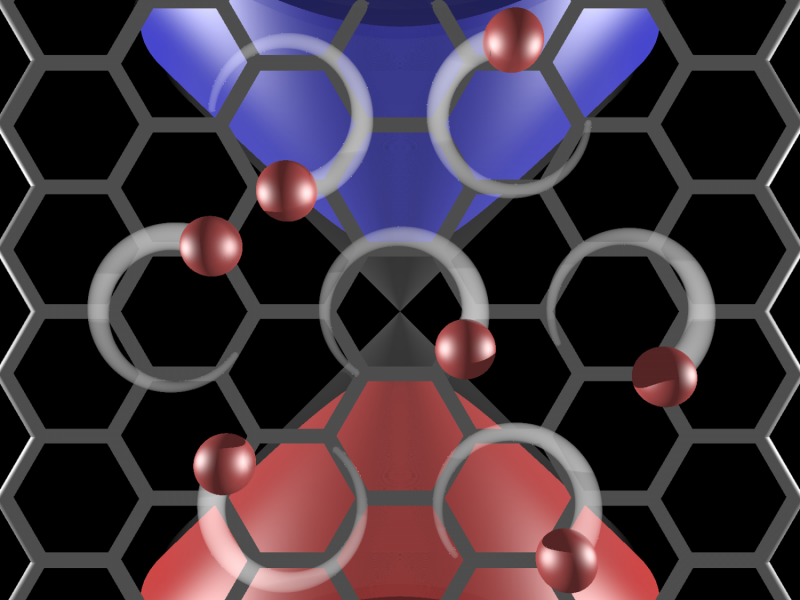Researchers learn to control graphene with lasers

New numerical simulations by Berkeley Lab Alvarez Fellow Alexander Kemper and his colleagues at Stanford University reveal how the quantum properties of graphene can be manipulated at ultrafast timescales with femtosecond laser pulses.
This work opens a new area of research, where scientists can tune and control material properties with optical laser pulses.
"What's exciting about these simulations is that we are looking at the constituent properties of matter at their proper timescales. Electrons live at femtosecond time scales, and we can now study how their properties are affected at this timescale," says Kemper.
"By illuminating them with ultrafast lasers, we can control their conduction properties, with exciting prospects for future devices based on this concept, for example by creating ultrafast switches in a spin-based version of electronic circuits."
The team's work was recently published in Nature Communications.
More information: Theory of Floquet band formation and local pseudospin textures in pump-probe photoemission of graphene, Nature Communications 6, Article number: 7047 DOI: 10.1038/ncomms8047
Abstract
Ultrafast materials science promises optical control of physical properties of solids. Continuous-wave circularly polarized laser driving was predicted to induce a light-matter coupled state with an energy gap and a quantum Hall effect, coined Floquet topological insulator. Whereas the envisioned Floquet topological insulator requires high-frequency pumping to obtain well-separated Floquet bands, a follow-up question regards the creation of Floquet-like states in graphene with realistic low-frequency laser pulses. Here we predict that short optical pulses attainable in experiments can lead to local spectral gaps and novel pseudospin textures in graphene. Pump-probe photoemission spectroscopy can track these states by measuring sizeable energy gaps and Floquet band formation on femtosecond time scales. Analysing band crossings and pseudospin textures near the Dirac points, we identify new states with optically induced nontrivial changes of sublattice mixing that leads to Berry curvature corrections of electrical transport and magnetization.
Journal information: Nature Communications
Provided by Berkeley Lab Computing Sciences




















